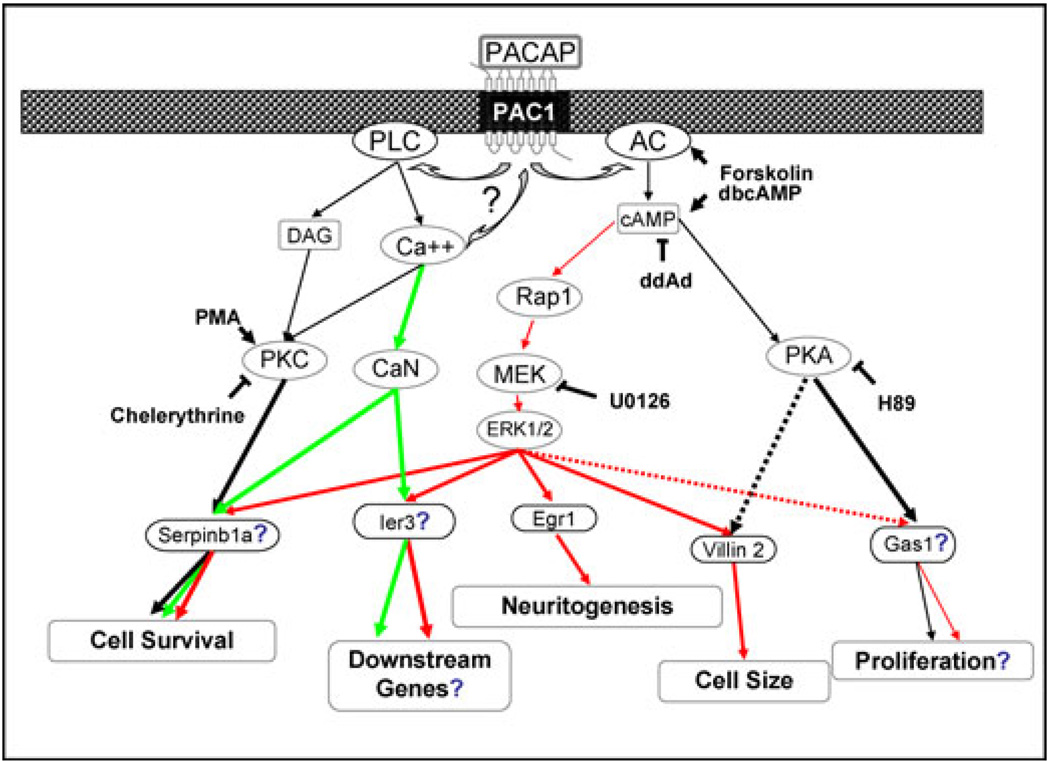Figure 1.
Establishment of a pituitary adenylate cyclase-activating polypeptide (PACAP) signaling network in PC12 cells mediating multiple aspects of cellular differentiation. Genes induced by PACAP, and the cell readouts survival, neuritogenesis, cell size, and proliferation were measured in the presence and absence of inhibitors of MAP kinase kinase or ERK kinase (MEK), protein kinase C (PKC), calcineurin (CaN), protein kinase A (PKA), adenylate cyclase (AC), and phospholipase C (PLC). Based on microarray capture of PACAP-regulated genes,23,30 correlative pharmacological modulation of gene regulation and cellular outputs,23,34 and siRNA inhibition of cellular responses,34 the pathways and genes regulated by them have been correlated with neuritogenesis, survival, growth arrest, and downstream differentiation in PC12 cells.26 Green arrows indicate calcium-dependent pathways, black arrows indicate PKA- or PKC-dependent pathways, and red arrows indicate extracellular signal-regulated kinase (ERK) -dependent signaling pathways to PACAP-responsive gene activation. Dotted arrows indicate partial contributions to activation. Genes or pathways indicated with ? are hypothesized; those without have been demonstrated using siRNA. Figure summarizes primary data reported previously.23,30,34

